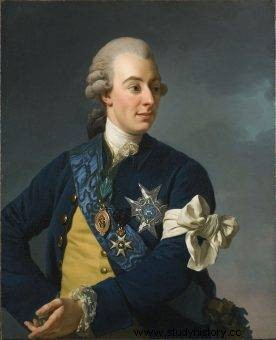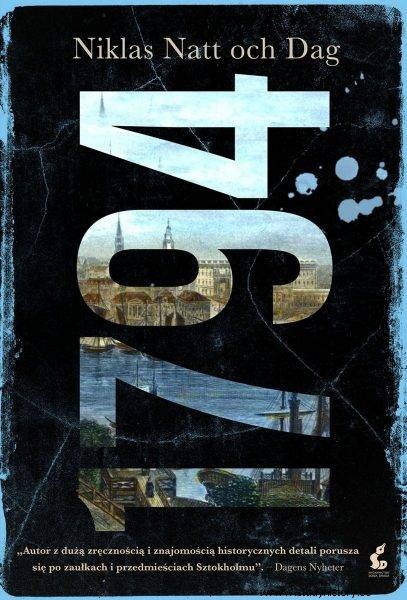Poverty, violence and dirt - this is what Stockholm looked like at the end of the 18th century. Even colorful clothes and ... coffee were a problem for the Swedish authorities. To prove that it is harmful, the King of Sweden went so far as to make a shocking scientific experiment on twins.
Swedes cannot imagine life without coffee. The average descendant of the Vikings consumes approx. 10 kg of coffee per head per year, which is about four cups a day - twice as much as a statistical European and over 3 times more than a Pole. Drinking coffee is closely related to the way of life and the celebration of the day.
It was similar in Sweden in the 18th century, when coffee became popular not only among the richest circles of society. Already at the beginning of the century, several dozen cafes were operating in Stockholm. Coffee became indispensable, especially for educated people, it accompanied conversations and scientific discussions . Helped to maintain good intellectual form and presence of mind.
The enormous popularity of coffee caused that there were voices about its harmfulness. They were so strong that they reached the royal court. Adolf Fryderyk decided that Swedes drink far too much coffee and tea and ... imposed high taxes on these stimulants.
His successor, Gustav III, also suffered from "cavophobia". This enlightened monarch, a supporter of enlightened absolutism, made a proud mark in the history of Sweden due to numerous reforms, including promoter of capitalism (in its early form, of course) and the free market. On the other hand, however, he himself won power through a coup d'état and ended the era of freedom, the heyday of parliamentarism, the limitation of the power of the throne and the abolition of censorship.
A bizarre experiment
Gustav III, as befits an Enlightenment ruler, decided on a scientific experiment. Two prisoners - twins - drank enormous amounts for a long time:one coffee, the other tea. Of course, under the supervision of doctors. The medics had time to die of natural causes, and the brothers, on the contrary, had a great time on the coffee and tea diets and lived to a great age . Gustav III was killed in an attack in 1792. The coffee case is stuck. The Swedes paid exorbitant taxes and drank their beloved drink legally - or used smuggled grains.

Even the Enlightenment ruler Gustav III suffered from "coffeeophobia".
After the tragic death of Gustav III, regency rule was introduced due to the minority of the heir to the throne. The Swedes quickly missed the previous monarch, because the regent of Reuterholm and his entourage had little to do with the Enlightenment. Niklas Natt och Dag in his book "1794" describes the situation that prevailed at the court at that time:
The court pages whisper that the baron (regent) is afraid and spend his days idling, as do courtiers who walk bristling like peacocks. For lack of other ideas, they turn to the dead for advice. Spiritist sessions are held daily in the palace.
Prohibition in the spirit of enlightenment
The country was ruled by schemers with their own interests in mind, the financial situation of the state was deteriorating, and the life of ordinary people was getting worse. Especially since the new government was also against coffee and decided to solve the problem in its own way - by completely prohibiting the buying, selling and drinking of this stimulant. In the book "1794" we read:
Lilla Börsen's cafe is bursting at the seams. It is full of people who think that if they drink coffee in the summer, they won't miss it in the fall. At the beginning of the year, a new ordinance was read from church pulpits, which prohibits the coffee trade since August. The decision was based on the fact that the import of the goods is being ruined by the state.

The text was inspired by the book by Niclas Natta oh Daga "1794", which has just been published by the Sonia Draga publishing house.
Few believe this explanation. They blame Reuterholm and blame it for his oversensitivity. People of different status come to the cafes:tall, short and medium-sized. They fraternize and compete in the art of insulting supreme authority.
The introduction of the ban resulted in the development of the black market. The Swedes have not stopped drinking coffee, but have even learned to brew it so that the characteristic smell does not spread . The "cavophobia of the rulers" lasted until 1820, when the restrictions were lifted.
Interestingly, the regency government had also another "enlightened" law prohibiting the wearing of colored clothes. Who could (because of his position) boycotted the ban, but the streets of Stockholm turned gray anyway.
What's left in the genes?
The coffee epic probably influenced the shaping of contemporary Swedish society. The eighteenth century, the time of the Enlightenment and the birth of capitalism were key in this. Dawid Kościewicz from the University of Economics in Wrocław points to the cultural determinants of the welfare state and the Swedish model of society.
The Swedes were a society of free peasants, represented in parliament. Their peasant origin is even a reason to be proud there. Another factor was Protestantism and its ethos of work and duty, as well as the resulting relations between the individual, society and the state, as well as man and the environment.
From the book "1794" we will learn, among others that the relationship between a nobleman and a peasant tenant was not a master-servant, but rather a superior-subordinate relationship. The latter, moreover, looked more like townspeople than peasants in our imagination. Origin still had a great influence on social standing, but wealth - not only inherited wealth - played an increasingly important role in this.
Bibliography:
- Niklas Natt och Dag, 1794 , Katowice 2021.
- Dawid Kościewicz, Cultural conditions of the welfare state in Sweden , www.cejsh.icm.edu.pl (accessed on September 6, 2021).
